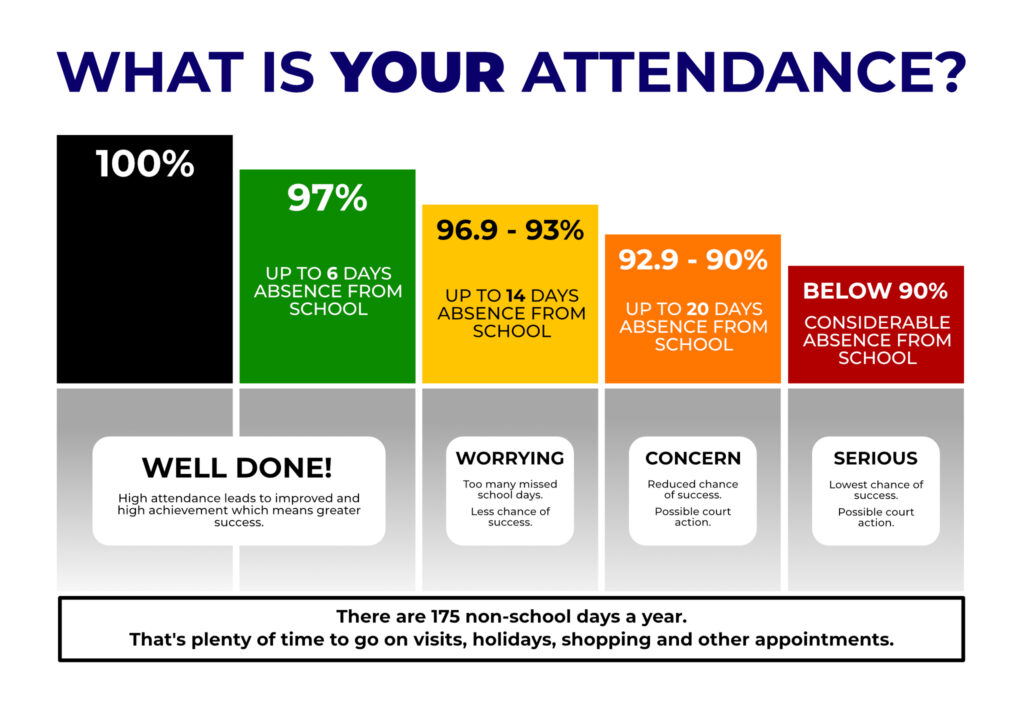How many absences are allowed in a school year Texas, In Texas, as in many other states around the country, school attendance is critical to students’ academic progress and overall well-being. Regular attendance allows students to actively engage in their education and maximize their learning potential. However, life situations may cause unavoidable absences. If you want to know how many absences are permitted in a school year in Texas, you’ve come to the correct place. In this tutorial, we’ll look at Texas’ school attendance policies to gain a thorough understanding of the rules and regulations that control student absences.
How Many Absences Are Allowed In A School Year Texas

Importance of School Attendance
Before we go into the specifics of Texas’ attendance policies, let us emphasize the significance of regular school attendance. Research repeatedly reveals that children who attend school on a regular basis are more likely to achieve academic success and graduate on time. Regular attendance in class allows students to participate in classroom discussions, collaborate with peers, and gain vital information from teachers. Furthermore, constant attendance instills a feeling of routine and responsibility in pupils, which can help them both in school and out.
Texas School Attendance Laws
In Texas, school attendance is governed by both state law and school district policy. While the Texas Education Code establishes the basic structure for attendance requirements, individual school districts are free to develop their own attendance rules within specific boundaries.
How Many Absences Are Allowed?
The amount of absences allowed during a school year varies depending on the student’s school district’s policy. However, the Texas Education Code requires students to attend school for at least 90% of the days the school is in session in order to obtain credit for a course or advance to the next grade level. This equates to a maximum of 10% of the permitted absences per school year.
Excused versus unexcused absences
In Texas, absences are often classified as excused or unexcused. Excused absences are those that the school system considers acceptable and can include reasons such as illness, medical appointments, family situations, or religious observances. Students are often asked to present proof, such as a doctor’s certificate, to prove excused absences.
Unexcused absences occur when there is no good reason or sufficient documentation. Unexcused absences can include skipping class without permission or truancy. School districts may impose repercussions for unexplained absences, such as detention, loss of privileges, or academic penalties.
Consequences of excessive absences
Exceeding the allowed number of absences in a school year can have serious consequences for children and their families. According to Texas law, pupils who accrue too many unexcused absences may face truancy charges, which can have legal consequences for both the student and their parents or guardians. Furthermore, prolonged absences can have a negative impact on students’ academic achievement, causing them to lag behind in their assignments and struggle to reach academic standards.
Strategies to Improve Attendance
Schools and communities can use a variety of tactics and efforts to encourage regular attendance and reduce absences. This may include:
Positive reinforcement: Recognizing and rewarding pupils with strong attendance records.
Parental participation entails engaging parents and guardians in monitoring and supporting their child’s attendance.
Early intervention entails identifying pupils who are at risk of chronic absence and delivering tailored interventions to address the underlying causes.
Community partnerships involve working with community organizations to provide resources and support services to students and families.
Schools can help students develop the habits and abilities required for academic achievement by applying these measures and cultivating an attendance-aware culture.
Also Read:- How Many Suspensions Before Expelled in Middle School
In Texas, school attendance policies are intended to encourage regular attendance and provide children with opportunities for academic success. While the number of absences allowed varies each school district, the overall purpose is to help kids reach their maximum potential. By knowing the policies governing student absences and collaborating with schools and communities, we can create an atmosphere in which every student can succeed.

